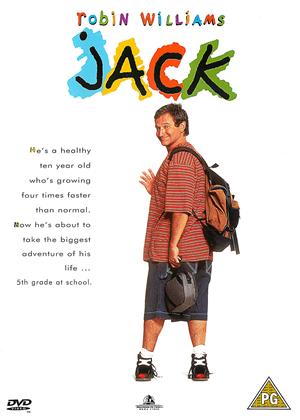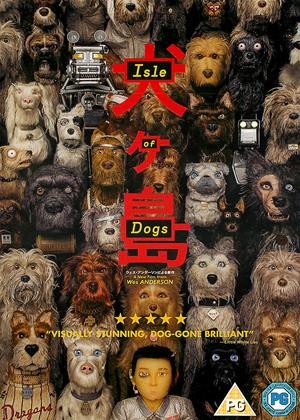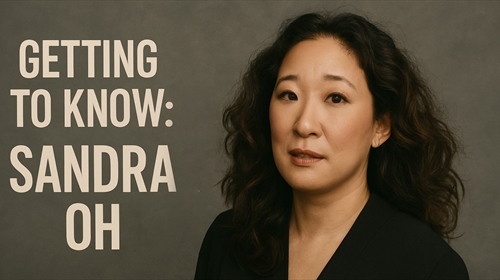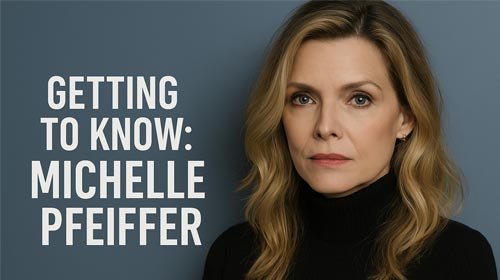Hollywood has been keeping it in the family since the silent era. As family acts had been common in vaudeville, it was hardly surprising that nepotism should have played a sizeable role in the advancement of America's film colony. But, throughout the generations, one clan has surpassed all others in terms of artistic audacity and consistent quality - the Coppolas.
Several film families have their claim to fame. Brothers Harry, Albert, Sam and Jack Warner took the gamble to introduce talking pictures with Alan Crosland's The Jazz Singer (1927), while the Selznicks and Zanucks also ran their own studios. Known as 'the Royal Family of Broadway', Lionel, Ethel and John Barrymore paved the way for such acting dynasties as the Chaplins, Fondas, Redgraves, Carradines, Sutherlands, Douglases and Arquettes. Six of the 10 Wayans siblings made their name in Tinseltown, while the Newman family of composers have racked up 90 Oscar nominations between them. And speaking of Academy Awards, John Huston became the only person to direct his father and daughter to success, when Walter won Best Supporting Actor for The Treasure of the Sierra Madre (1948) and Anjelica took the equivalent prize for Prizzi's Honor (1985).

Francis Ford Coppola - Doing It the Hard Way
The Coppolas are the second family to boast three generations of Oscar winners, with the first to claim a statuette being Francis Ford Coppola for his screenplay for Franklin J. Schaffner's Patton (1970). Following a difficult childhood that saw him attend 24 different schools after battling polio, Coppola trained as a film-maker at UCLA and made his feature bow with the softcore comedy, Tonight For Sure (1962). His talent was spotted by independent producer-director Roger Corman, who allowed Coppola to learn his craft through a series of jobs on low-budget genre movies. He also gave him $60,000 and nine days to direct the cult horror Dementia 13 (1963), which led to offers to contribute to the screenplays of René Clément's Is Paris Burning (1965) and Sydney Pollack's This Property Is Condemned (1966).
Despite this scripting success, Coppola was determined to direct and received mixed reviews for You're a Big Boy Now (1966) and The Rain People (1969). But he got to put Fred Astaire through his paces in what turned out to be his last musical, Finian's Rainbow (1968), and raised eyebrows when he founded the Zoetrope production company that enabled George Lucas to make THX 1138 (1971) and American Graffiti (1973). Yet, none of these achievement prepared moviegoers for Coppola's next offering, an adaptation of Mario Puzo's The Godfather (1972).
Coppola was hardly Paramount's first choice for the assignment and was only hired after Sergio Leone, Peter Yates, Richard Brooks, Arthur Penn, Costa-Gavras and Otto Preminger declined it. But his fascination with family dynamics enabled Coppola to turn the saga of Don Vito Corleone and his sons into an epic chronicle of postwar America, as he harked back to the clan's Sicilian roots in The Godfather: Part 2 (1974) and exposed its divisions in the corporate era in The Godfather: Part 3 (1990). Although he missed out on the Oscar for Best Director, Coppola shared the Adapted Screenplay award with Puzo and took both prizes when Part 2 became the first sequel to win Best Picture. The concluding episode drew fewer plaudits, but the trilogy stands as a modern American classic.

Having adapted F. Scott Fitzgerald's The Great Gatsby (1974) for director Jack Clayton, Coppola tapped into the paranoia of the Watergate era with The Conversation (1974), a tense surveillance thriller that won the Palme d'Or at Cannes and established Coppola alongside Lucas, Steven Spielberg, Martin Scorsese, Brian De Palma and John Milius in the cabal of emerging American directors known as 'the Movie Brats'. But rather than playing it safe in churning out effects-laden blockbusters, Coppola embarked upon the nightmare shoot for Apocalypse Now (1979), which relocated the action of Joseph Conrad's novella, Heart of Darkness, to South-East Asia. Reuniting Coppola with Marlon Brando, this gruelling odyssey reflected the insanity behind the scenes that wife Eleanor captured with co-directors George Hickenlooper and Fax Bahr in Hearts of Darkness: A Filmmaker's Apocalypse (1991). Yet, Coppola refused to make things any easier on himself when he sought to reinvent the Hollywood musical with One From the Heart (1982), only for this ambitiously stylised confection to lose $25.4 million at the box office.
Despite this setback, Coppola refused to conform to commercial type and adapted a couple of S.E. Hinton novels, The Outsiders and Rumble Fish (both 1983), the latter of which he filmed in black and white to contrast with the former's vibrant palette. Yet, while these paeans to youth and the prospect of escape acquired cult followings, they failed to arrest what many critics perceived to be a creative decline that continued with The Cotton Club (1984), Gardens of Stone (1987) and Tucker: The Man and His Dream (1998). Even when Coppola did connect with audiences, the naysayers were quick to point out the similarities between Peggy Sue Got Married (1986) and Robert Zemeckis's Back to the Future (1985).

The thematic variety of Coppola's 80s output convinced many that he was a maverick rather than an auteur. Yet he returned to dazzling form with Bram Stoker's Dracula (1992), in which he set out to remind audiences of his technical brilliance and understanding of his medium. However, the doubts returned when Coppola emerged from a legal struggle with Warners over his planned production of Pinocchio with the mawkish ageing fantasy, Jack (1996), and the John Grisham adaptation, The Rainmaker (1997). A decade passed before Coppola got behind the camera again, but few saw the hand of a genius in a comeback triptych comprised of Youth Without Youth (2007), Tetro (2009) and Twixt (2011). Consequently, apart from conducting an experiment in live cinema with Distant Vision (2015), Coppola has devoted himself to non-cinematic projects and taken pride in the achievements of his kinfolk.
Carmine, the Shires and the Schwartzmans
Flautist Carmine Coppola began composing music in the early 1950s and was introduced to cinema by his son Francis when he wrote the score for Tonight For Sure. A decade was to pass before Carmine worked for the screen again, but his collaboration with Nino Rota on the music for The Godfather: Part 2 earned him the Oscar for Best Original Dramatic Score. Carmine also produced exhilarating soundtracks for Carroll Ballard's The Black Stallion (1979) and American Zoetrope's 1980 revival of Abel Gance's Napoleon (1927). He also periodically reunited with Francis, most notably on the 'Life Without Zoë' segment of New York Stories (1981), which was co-written by his granddaughter, Sofia Coppola, and featured his daughter, Talia Shire.
Having taken minor roles in a handful of undistinguished features, Talia was thrust into the limelight when her brother cast her as Connie Corleone in The Godfather. Her performance in the sequel earned her a Best Supporting Actress nomination and persuaded Sylvester Stallone to cast her as Adrian Pennino in John G. Avildsen's Rocky (1976). Yet, despite a Best Actress citation that secured her a recurring role in the four sequels made to 1990, Talia found worthwhile parts like Claire in Robert Ellis Miller's Bed and Breakfast (1991) hard to come by, as she juggled domestic duties. However, she was always willing to support family members by taking parts in pictures like nephew Christopher Coppola's Deadfall (1993) and David O. Fincher's I Heart Huckabees (2004), which starred her son, Jason Schwartzman.
Talia's first husband had been composer David Shire, whose credits during their decade-long marriage included Joseph Sargent's The Taking of Pelham One Two Three (1974), Dick Richards's Farewell, My Lovely (1975), Alan J. Pakula's All the President's Men (1976) and Martin Ritt's Norma Rae (1979). But, while Shire had composed for his brother-in-law's The Conversation, Francis rejected his score for Apocalypse Now. By the following year, however, Talia was married to entertainment lawyer-turned-producer Jack Schwartzman, whose CV included Hal Ashby's Being There (1979) and Irving Kershner's 007 outing, Never Say Never Again (1983). He died in 1994, but his sons continue to thrive in the film industry.

Cinematographer John Schwartzman is best known for his collaborations with Michael Bay on The Rock (1996), Armageddon (1998) and Pearl Harbor (2001) and with John Lee Hancock on The Rookie (2002), Saving Mr. Banks (2013) and The Founder (2016). However, his sole Oscar nomination came for Gary Ross's Seabiscuit (2003), even though he has consistently demonstrated that he is equally at home on action flicks like Michel Gondry's The Green Hornet (2011), Marc Webb's The Amazing Spider-Man (2012) and Colin Trevorrow's Jurassic World (2015) as he is on such offbeat delights as Jeremiah S. Chechik's Benny and Joon (1993), Michael Lehmann's Airheads (1994), Jay Roach's Meet the Fockers (2004) and Rob Reiner's The Bucket List (2007).
Half-brother Robert Schwartzman called the shots on John's most recent release, The Unicorn (2018). Primarily known as a musician before he played Michael Moscovitz in Garry Marshall's The Princess Diaries (2001), Robert made his directorial debut with Dreamland (2016). Two years his senior, Jason Schwartzman also divides his time between music and movies. He had no acting experience when Wes Anderson cast him as quirky teenager Max Fischer in Rushmore (1998). But he held his own so capably against co-star Bill Murray that Anderson subsequently recruited him for The Darjeeling Limited (2007), Fantastic Mr. Fox (2009), Moonrise Kingdom (2012) and The Grand Budapest Hotel (2014).
When not teaming with cousins Roman (CQ, 2001 & A Glimpse Inside the Mind of Charles Swan III, 2012) and Sofia Coppola (Marie Antoinette, 2006), Schwartzman has specialised in comedy, whether headlining indies like Dewey Nicks's Slackers, Jonas Åkerlund's Spun (both 2002), Todd Louiso's The Marc Pease Experience (2009) and Alex Ross Perry's Listen Up Philip (2014) or taking key supporting roles in more mainstream pieces like Nora Ephron's Bewitched, Anand Tucker's Shopgirl (both 2005), Judd Apatow's Funny People (2009), Edgar Wright's Scott Pilgrim vs. the World (2010) and Tim Burton's Big Eyes (2014).
Schwartzman also cameo'd to splendid effect as Ringo Starr in Jake Kasdan's Walk Hard: The Dewey Cox Story (2007) and Disney songwriter Richard M. Sherman in Saving Mr. Banks.
Roman, Sofia and Gia

It's perhaps surprising that Schwartzman hasn't tried his hand at directing, especially as he shared co-story credits with Wes Anderson and Roman Coppola on The Darjeeling Limited and Isle of Dogs (2018), while Mozart in the Jungle (2014-2018), the Amazon show he developed with his cousin, won the Golden Globe for Best TV Comedy Series. Coppola also has an Oscar nomination to his name, thanks to his script collaboration with Anderson on Moonrise Kingdom, But he has always been something of a team player, ever since he played a baby in father Francis's You're a Big Boy Now. Further walk-on parts followed before he became Coppola's trusted second unit director in the 1990s and he has since fulfilled that role on several of his sister Sofia's features, as well as Anderson's The Life Aquatic With Steve Zissou (2004).
Like Roman and their older brother Gian-Carlo, Sofia also started out acting in her father's films. She also guested in Tim Burton's Frankenweenie (1984) and Yurek Bogayevicz's Anna (1987). However, she incurred the wrath of the critics for replacing Winona Ryder as Mary Corleone in The Godfather: Part 3 and not only drew the Golden Raspberry Award for Worst Supporting Actress, but also the Razzie for Worst New Star. Having gone under the radar in Jeffrey Levy's Inside Monkey Zetterland (1992), Coppola was nominated for another Worst Supporting Actress Award for her display as Saché in George Lucas's Star Wars: Episode I - The Phantom Menace (1999).
Fortunately, Sofia had already shown directorial promise with her monochrome mean girls short, Lick the Star (1998), and she made an exceptional transition into features with The Virgin Suicides (1999), an adaptation of a Jeffrey Eugenides novel that marked the beginning of Sofia's long-standing relationship with Kirsten Dunst. With only her second feature, Lost in Translation (2003), Sofia followed Lina Wertmüller (Seven Beauties, 1975) and Jane Campion (The Piano, 1993) by becoming only the third woman to be nominated for the Academy Award for Best Director.

Ultimately, she had to settle for the Oscar for Best Original Screenplay, while costume designer Milena Canonero took the only award won by Marie Antoinette (2006), a gleefully anachronistic recreation of the French Revolution that united Jason Schwartzman and Kirsten Dunst as Louis XVI and his Austrian queen, but completely divided the critics. Sofia also received mixed notices for The Bling Ring (2013), which was inspired by Nancy Jo Sales's Vanity Fair article, 'The Suspects Wore Louboutins'. But, having becomes the first American woman to win the Golden Lion at the Venice Film Festival with Somewhere (2010), she became only the second women after Yuliya Solntseva (The Story of the Flaming Years, 1961) to win the prize for Best Director at Cannes for The Beguiled (2017), a remake of Don Siegel's 1971 Clint Eastwood vehicle, which had been adapted from Thomas P. Cullinan's novel, A Painted Devil.
Sofia isn't the only female film-maker in the Coppola clan, however, as her grandmother, Eleanor, co-directed the documentary Hearts of Darkness: A Filmmaker's Apocalypse, while her niece, Gia, launched her feature career with Palo Alto (2013), which drew on a short story collection of the same name by actor James Franco. Sadly, Gia never knew her father, 22 year-old Gian-Carlo Coppola, as he was killed in a speedboat accident when her mother, Jacqui de la Fontaine, was two months pregnant. But she spent much of her childhood at the Coppola vineyard in the Napa Valley and is set to continue the family tradition with The Secret Life of the Lonely Doll, a slated biopic of children's author Dare Wright.
The One and Only Nicolas Cage
The most prolific member of the Coppola clan opted not to use the family name in order to avoid accusations of nepotism and adopted a pseudonym inspired by a Marvel Comics character. That said, he was billed as Nicolas Coppola in his screen debut, Amy Heckerling's seminal school study, Fast Times At Ridgemont High (1982), and only used the name Nicolas Cage for the first time in Martha Coolidge's Valley Girl (1983). Moreover, three of his earliest outings were directed by his Uncle Francis: Rumble Fish; The Cotton Club; and Peggy Sue Got Married. But the son of August Coppola (an academic who had worked in an executive capacity at Zoetrope) quickly made his name in his own right, as he delivered eye-catching performances in Alan Parker's Birdy (1984), Joel Coen's Raising Arizona, Norman Jewison's Moonstruck (both 1987), David Lynch's Wild At Heart (1990) and John Dahl's Red Rock West (1993).
He also teamed with brother Christopher Coppola on Deadfall and twice worked with Andrew Bergman on Honeymoon in Vegas (1992) and It Could Happen to You (1994), which confirmed that Cage could switch from action man to romantic hero with an offbeat earnestness that was rooted in his admiration for 1950s icon, James Dean. As his stock rose, Cage found himself in demand with such frontline film-makers as Barbet Schroeder (Kiss of Death, 1995), Brian De Palma (Snake Eyes, 1998), Joel Schumacher (8MM, 1999) and Martin Scorsese (Bringing Out the Dead, 1999), with the latter pairing Cage with then wife, Patricia Arquette. In 1997, he was even lined up for Tim Burton's Superman Lives, but the project was cancelled and he had to wait until Teen Titans Go! To the Movies (2018) to finally play the Man of Steel.

This setback actually launched Cage on his finest run of films, as he followed an Oscar win for his harrowing turn as a suicidal alcoholic screenwriter in Mike Figgis's Leaving Las Vegas (1995) with arresting displays of tongue-in-cheek machismo opposite Sean Connery in Michael Bay's The Rock (1996), John Malkovich in Simon West's Con Air and John Travolta in John Woo's Face/Off (both 1997), in which Cage's terrorist and Travolta's FBI agent had assumed each other's mannerisms after undergoing drastic plastic surgery.
In addition to a reunion with Woo on Windtalkers (2002), this string of hits also brought further offers to work with such leading directors as Brett Ratner (The Family Man, 2000), John Madden (Captain Corelli's Mandolin, 2001), Ridley Scott (Matchstick Men, 2003), Gore Verbinski (The Weather Man, 2004) and Oliver Stone (World Trade Center, 2006). Cage also received a second Oscar nomination for his dual role in Adaptation (2002), which was directed by Sofia Coppola's then husband, Spike Jonze. He also made his sole venture into directing with Sonny (2002) and founded Saturn Films, which produced such acclaimed pictures as E. Elias Merhige's Shadow of the Vampire (2000) and Alan Parker's The Life of David Gale (2003).
Yet, while he often defied the critics to score box-office hits with National Treasure (2004) and National Treasure: Book of Secrets (2007), as well as Ghost Rider (2007) and Ghost Rider: Spirit of Vengeance (2011), Cage enjoyed mixed fortunes with remakes like City of Angels (1998), Gone in 60 Seconds (2000), The Wicker Man (2006) and Bangkok Dangerous (2008). Nevertheless, his self-proclaimed 'Nouveau Shamanic' acting style remained popular with audiences and casting directors, as Cage headlined Lee Tamahori's Next (2007), Alex Proyas's Knowing, Werner Herzog's Bad Lieutenant: Port of Call New Orleans (2009), Matthew Vaughn's Kick-Ass, John Turteltaub's The Sorcerer's Apprentice (both 2010) and Dominic Sena's Season of the Witch (20111).
As well as doing voiceover work on The Ant Bully (2006), G-Force, Astroboy (both 2009) and The Croods (2013), Cage also excelled as a lumber boss protecting a teenager from his abusive father in David Gordon Green's powerful indie, Joe (2013). But, while the quality of his projects sometimes veered wildly, Cage could always be relied upon to deliver a scene-stealing performance in such varied fare as Simon West's Stolen (2012), Paul Schrader's Dying of the Light (2014), Uli Edel's Pay the Ghost (2015), Larry Charles's Army of One, Mario Van Peebles's USS Indianapolis (both 2016) and Brian Taylor's Mom and Dad (2017).
Cage also struck up a left-field partnership with Con Air co-star John Cusack on Scott Walker's The Frozen Ground (2013) and Steven C. Miller's Southern Fury (2017), in which he gives the most deliriously unhinged performance of his entire career. Moreover, he has also kept the family business rolling along by finding roles for his son Weston in Andrew Niccol's Lord of War (2005), Paco Cabezas's Tokarev (2014) and York Shackleton's 211 (2018). So, some six decades after it started, the Coppola saga shows no sign of coming to a close just yet.




























































































































































